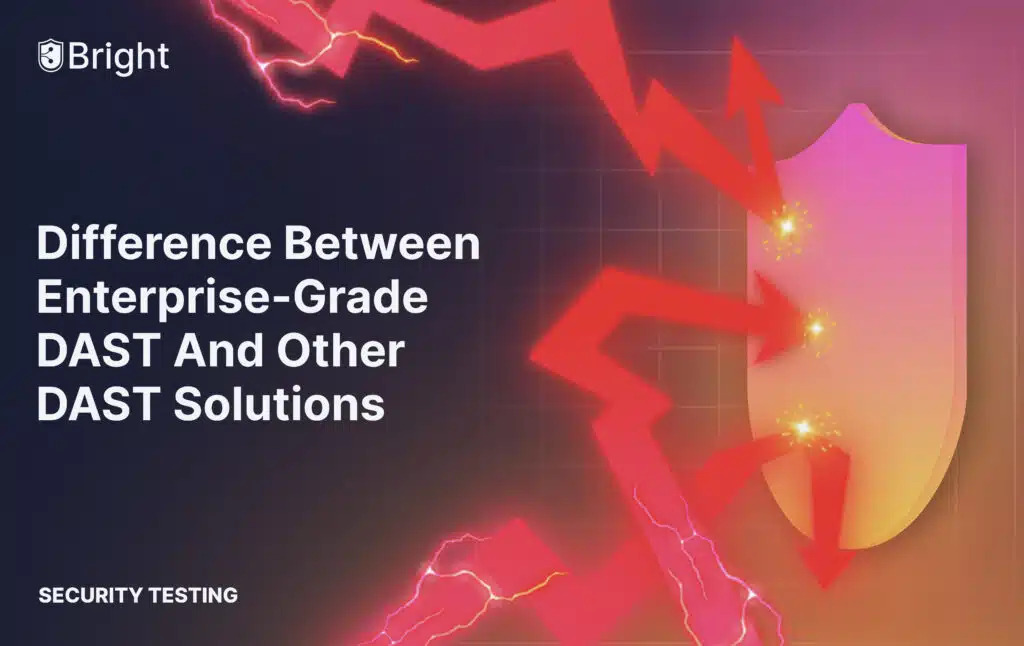Dynamic Application Security Testing (DAST) tools are essential for identifying vulnerabilities in applications during runtime. However, not all DAST tools are created equal. Enterprise-grade DAST solutions are designed to meet the complex and high-stakes needs of large organizations, setting them apart from more basic or developer-focused options. One of their most significant advantages is the ability to test business logic vulnerabilities while offering advanced authentication and crawling capabilities, making them indispensable for modern enterprises.
The Unique Demands of Enterprise Security
Large enterprises often deal with highly complex environments that include diverse applications, numerous APIs, and globally distributed teams. In such scenarios, a DAST tool needs to do more than just detect vulnerabilities. It must integrate seamlessly with existing workflows, provide actionable insights, and scale effectively across multiple teams and projects. Enterprise-grade DAST tools excel in these areas and address challenges that simpler tools cannot.
1. Scalability and Performance
Enterprise environments typically include hundreds, if not thousands, of applications and APIs that need regular security assessments. Enterprise-grade DAST solutions are designed to handle such scale efficiently by supporting:
- Parallel Scans: The ability to run multiple scans simultaneously without a performance dip.
- Large Workloads: High-speed scanning to process large applications and extensive endpoints quickly.
In contrast, basic DAST tools often struggle with performance when applied to enterprise-scale use cases, leading to delays and bottlenecks.
2. Advanced Customization and Configuration
Enterprise-grade DAST tools offer organizations the flexibility to tailor scans to their unique requirements. They support advanced configurations such as:
- Custom test cases for unique application architectures.
- Fine-grained scanning controls for specific endpoints or APIs.
- Role-based access for managing users across distributed teams.
Basic tools often lack these options, making them unsuitable for testing applications with non-standard architectures or complex workflows.
3. Integration with Enterprise Workflows
Seamless integration with DevSecOps pipelines and enterprise tools is another major differentiator for enterprise-grade DAST solutions. They provide:
- CI/CD Compatibility: Easy integration with Jenkins, GitLab, Azure DevOps, and other CI/CD tools.
- Comprehensive Reporting: Support for export formats (e.g., JSON, CSV, XML) compatible with third-party security management systems.
- API Access: Robust APIs to automate scans and integrate results into broader workflows.
Basic tools often lack robust APIs or CI/CD integration, limiting their usefulness in fast-paced DevSecOps environments.
4. Broader Vulnerability Detection
One of the most significant advantages of enterprise-grade DAST tools is their ability to identify business logic vulnerabilities – issues that arise from flaws in the design or implementation of application workflows. These tools also:
- Detect advanced issues such as server-side request forgery (SSRF).
- Perform compliance-focused scans for regulations like PCI DSS or GDPR.
- Handle complex applications with multi-step authentication and dynamic content.
In contrast, basic DAST tools typically focus on common vulnerabilities like SQL injection or cross-site scripting (XSS), leaving critical enterprise issues undetected.
5. Comprehensive Reporting and Insights
Enterprise-grade DAST tools provide detailed and actionable reports to help teams prioritize vulnerabilities effectively. Key features include:
- Risk Scoring: Helps teams focus on the most critical vulnerabilities.
- Granular Reports: Segmented by application, team, or compliance standard.
- Developer-Friendly Guidance: Often includes links to code snippets or remediation steps.
Basic tools may only offer generic or high-level reports, which are less helpful for large teams working across multiple projects.
6. Continuous Support and Updates
With new threats emerging daily, enterprise-grade DAST tools prioritize timely updates and active support. These include:
- Real-Time Threat Intelligence: Identifies the latest attack vectors.
- Dedicated Support Teams: Rapidly resolve technical issues.
- Regular Updates: Ensures scanning algorithms and compliance libraries stay current.
Basic DAST tools often lack the same level of ongoing support, leaving enterprises vulnerable to evolving threats.
Choosing the Right DAST for Your Enterprise
While enterprise-grade DAST solutions offer significant advantages, they come at a higher cost and require more time to implement effectively. Organizations should evaluate their needs carefully, considering factors such as:
- Scale: How many applications or APIs require regular scanning?
- Complexity: Are there unique configurations or multi-layered applications that need advanced testing?
- Integration Needs: Does the solution need to fit seamlessly into existing CI/CD pipelines or security ecosystems?
For small or mid-sized teams with simpler applications, basic DAST tools might suffice. However, for enterprises managing mission-critical applications in a complex environment, an enterprise-grade solution is often the only viable choice.
Conclusion
Enterprise-grade DAST tools go far beyond the basic functionality of standard DAST solutions, offering scalability, customization, and advanced integrations to meet the demands of large organizations. With the ability to test business logic vulnerabilities, leverage advanced authentication mechanisms, and provide robust crawling capabilities, they empower enterprises to secure complex, dynamic applications and APIs while aligning with modern DevSecOps practices. By investing in enterprise-grade DAST, organizations can ensure they stay ahead of evolving threats and maintain a strong security posture across their digital ecosystems.





